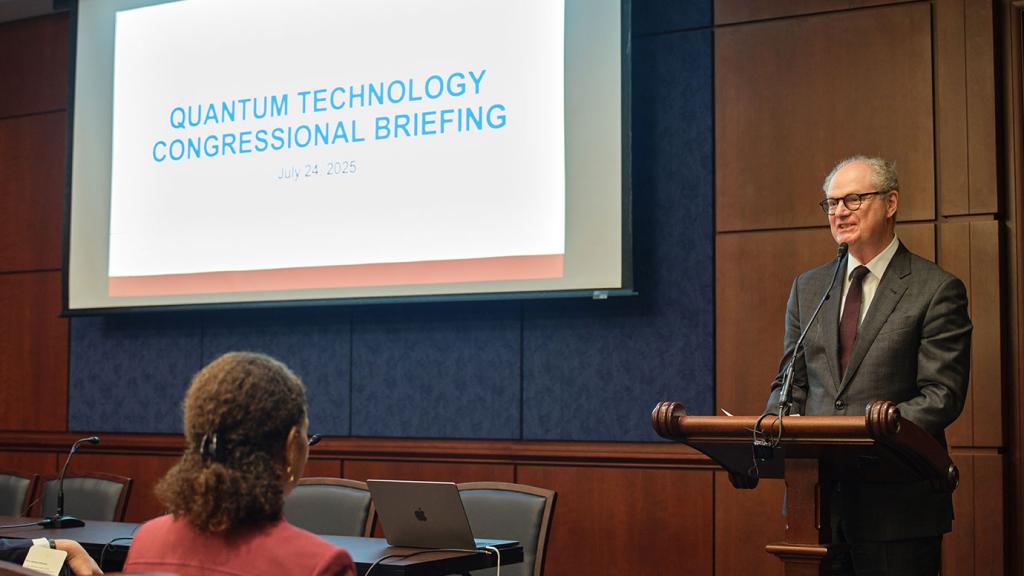I am pleased to announce that at the May 25 meeting of the University of Chicago Board of Trustees Robert J. Zimmer agreed to continue serving as President of the University of Chicago through at least 2022. The Board firmly believes that continuity of Bob’s leadership is critical to advancing the University’s powerful trajectory.
For the past decade, under Bob’s leadership, the University has developed and implemented a program to become the preferred destination for the world’s best scholars and students, and to enhance its eminence among the few top-ranked research universities in the United States and the world.
During that time, the University has funded its blueprint of transformation, making substantial investments on campus to fulfill the programmatic ambitions of the faculty, support the exceptional scholarship and education for which the University of Chicago is known, invest in our surrounding neighborhoods, increase its financial support for students, and through this work, improve the quality of human life.
Since 2006, Bob’s ambitious vision and inspired leadership—and his extensive work with faculty, other leaders of the University, and our extended community—have led to unprecedented levels of philanthropic engagement. Recently we announced the expansion of our ambitious philanthropic capital campaign, The University of Chicago Campaign: Inquiry and Impact, to a record $5 billion. Moreover, through his devotion to the University’s core principles of rigorous scholarly inquiry, academic freedom and free expression, and diversity and inclusion, Bob has reinforced throughout his tenure the institution’s distinct culture and history.
While it is impractical to list in full the myriad accomplishments of the past ten years, here are a few of the highlights of his team’s achievements:
- Dramatic increase in financial aid for undergraduate students, with the establishment of programs such as the Odyssey Scholarship Challenge, and for graduate and professional students, with the Graduate Aid Initiative significantly changing the support for doctoral students in humanities, social sciences, and divinity, and the Rubenstein Scholars program for students in the Law School;
- Enhanced eminence of the College, increasing applications by over 300 percent to over 31,000 in 2016, improving selectivity by 80 percent to 8 percent in 2016, and doubling admission yield rates to 64 percent, all leading to an even higher quality, and more diverse, student body;
- Growth of the non-clinical tenured and tenure-track faculty of the University by approximately 15 percent, including six new University Professors;
- The launch of a wide array of faculty-led institutes and centers, including the University’s first engineering program, the Institute for Molecular Engineering, the Becker Friedman Institute for Research in Economics, the Bucksbaum Institute for Clinical Excellence, the Coase-Sandor Institute for Law and Economics, The Duchossois Family Institute, the Energy Policy Institute at Chicago (EPIC), the Karla Scherer Center for the Study of American Culture, the Mansueto Institute for Urban Innovation, the Neubauer Collegium for Culture and Society, The Pearson Institute for the Study and Resolution of Global Conflicts, the Stevanovich Institute on the Formation of Knowledge, and many more;
- New or expanded academic programs and activities in areas such as computer and data science, policy leadership, with a major and strategic expansion of the Harris School of Public Policy; neurobiology, with a new undergraduate major and a multi-disciplinary neuroscience institute; and the University’s affiliation with the Marine Biological Laboratory in Woods Hole, Mass.;
- An integration and amplification of innovation activities across the University, including among others Chicago Booth, the Institute for Molecular Engineering, and Argonne National Laboratory, through the establishment of the Polsky Center for Entrepreneurship and Innovation;
- Expansion of arts activities, with the opening of the Logan Center for the Arts, and the establishment of both the Gray Center for Arts and Inquiry and the Arts and Public Life Initiative;
- The unprecedented success of the Campaign for Inquiry and Impact, which, as noted above, has inspired the Board to increase the Campaign goal to $5 billion;
- The physical integration of campus and execution of a capital development program designed to meet the continuously evolving facility needs of the University’s faculty, students, and staff, including the Eckhardt Research Center, the Knapp Center for Biomedical Discovery, the University of Chicago Medicine’s Center for Care and Discovery, Saieh Hall for Economics, the Mansueto Library, the Renee Granville-Grossman Residential Commons and Campus North Residential Commons, a new high school for the UChicago Charter School, and both Earl Shapiro Hall and the Gordon Parks Arts Hall for the Laboratory Schools;
- A focus on diversity, inclusion and globalism, with a student body that is racially, ethnically, geographically and otherwise increasingly more diverse, and the work of the Office of Business Diversity intentionally creating opportunities for minority- and women-owned businesses within professional services, construction, and other sectors;
- Strengthened partnerships with the city of Chicago and local organizations, as a model of what can be done between universities and cities more generally, including a clear University commitment to developing capacity on the South Side through efforts such as the Urban Education Institute and its four-campus charter school, the collaboration of faculty in UChicago Urban Labs with non-profits and government agencies testing and designing policies to address urban issues, education and training programs such as UChicago Local and the Civic Leadership Academy for local business operators and leaders in non-profits and government agencies, and UChicago Promise, with programs for all Chicago Public School students, parents, and counselors to help students attend four-year colleges with financial support;
- Catalyzation of development on what has become a more vibrant 53rd Street corridor, including an office tower, restaurants, hotels, and retail;
- The Medical Center’s expansion of access to health care on the South Side, including the upcoming opening of a level 1 adult trauma center;
- A broadened global engagement strategy with a substantial increase in the number of students from abroad (and increased financial support for those students), a rise in the number of University students studying abroad with additional opportunities to do so, the opening of the Center in Beijing, Center in Delhi, and the Francis and Rose Yuen Center in Hong Kong, the provision of support for the faculty associated with the Centers, and support for faculty and student work across the globe; and
- Growth of the University’s endowment from $4.8 billion in 2006 to $7.6 billion at present, despite the global financial crisis.
To achieve this all requires a clear vision, a strong, disciplined team, and an ever-growing circle of supporters and philanthropists. I would like to extend my thanks to Bob and his team for their ongoing commitment to this institution, for all that they have achieved so far, and for the successes that await the University community in the future.






